 |
| With seedlings, small is good. |
Mrs. Homegrown here:
Senescence is the “change of the biology in an organism as it ages after it reaches maturity” (see Wikipedia). I believe I’m experiencing it right now.
What we’re here to warn you about today is buying plants which are old before their time. Seedlings which are senescent.
What are senescent seedlings? Basically, these are seedlings whose roots have met the bottom of their container. See, plants have their own intelligence and follow their own internal clocks.
If, for instance, a little tomato seedling spends enough time in a tiny pot or shallow flat, its roots will reach the bottom of the container. When it meets this resistance, it will start to feel confined, and it will say to itself, “Well, this is it. This is all the space I’ll ever get, so I better get going on the reproduction.” At that point its biology will change and it will flower and start to do it’s best to set fruit or seed as soon as possible. In short, it intends to reproduce before it runs out of resources.
The result of this biological shift is that this plant will never really thrive in your garden. It will stay smallish and bear just a little before closing up shop. It’s not that the plant is unhealthy, it’s just that it’s done. You won’t get much performance out of it. It’s the tomato that never gets tall. It’s the pepper plant that makes one single pepper.
Beware: Most nursery seedlings are senescent.
So keep these things in mind:
- When you buy seedlings, look at the bottom of the container. If roots are poking out, it’s a no-go. This pertains particularly to annual vegetables. Perennials don’t like being root bound either, but the outcomes are not as extreme.
- In addition to long roots, also look for tell-tale signs of maturity in a vegetable, like flowers or fruits. Tomato plants already bearing tiny tomatoes are not a good thing. Cukes that are flowering are not a good thing.
- Look for the smallest, youngest seedlings you can find. Teeny tiny is good. The more leafed out they are, the longer their roots will be.
- If you’re raising plants from seeds, don’t let the seedlings sit around too long. Get them into the ground when they open their first true leaves. If you can’t plant for some reason, transplant them to deeper containers.
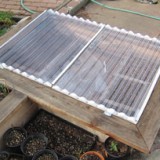

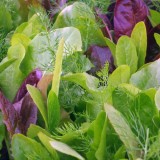
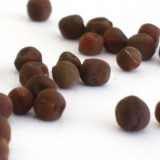
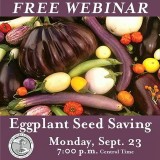
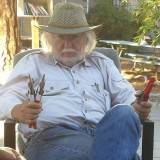
Thank you for this, I hadn’t realised I was doing so much damage by not repotting promptly. I thought I was at worst slowing them down a bit. It also explains a few failures with seedlings I was given.
This is good information. I had tried to start my seeds at the same time and stagger the plantings by keeping the seedlings in small containers longer. It never seemed to work and I didn’t realize it had a connection to them getting rootbound.
So is a seedling being rootbound the same thing?
So, when I buy the tallest, leggiest tomatoes I can find, strip off all but three leaves on the top, and plant them a foot deep, I am doing it all wrong? Bummer
@DigitalBishop: Yes, a rootbound seedling is going senescent.
@Parsimony: You’re following time honored gardening instructions. Doing that probably helps make up for the fact that they are so old, but better to plant them when they’re little.
is that…purslane?
@Anon: Ha! Yes! You get the gold star for this post. From your comment I assume purslane is a dreadful weed where you come from. But I really like to eat it (it’s super nutritious, btw), and it’s so rare around here that I can’t forage it, so I’m going to grow it.
Whenever I accompany the dood to Home Despot or Lowes, I have to steer him the heck away from all the vegetable plants. “That one’s bigger than ours!” “Look, those have fruit on them!” The peppers are always a bust. The tomatoes are always a bust.
You are bang on to steer people away from purchasing seedlings which are already bearing fruit. My experience is that those plants will not thrive in the garden.
I’ve had good luck, however, with breaking up, or separating, or “tickling” the roots of seedlings that have gotten carried away in the root department. Part of this logic is that their roots would continue to circle underground instead of spreading out.
It’s basically the same technique that you use when planting a tree or shrub with a balled root, but on a smaller scale. Does that make sense?